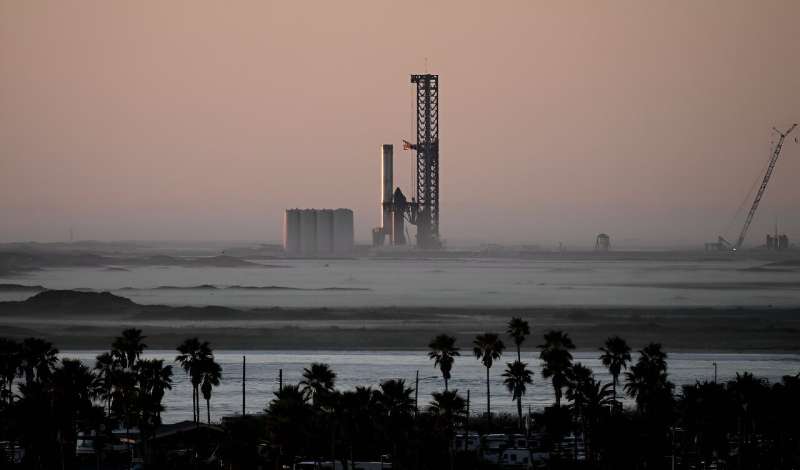This article has been reviewed according to Science X's editorial process and policies. Editors have highlighted the following attributes while ensuring the content's credibility:
fact-checked
reputable news agency
proofread
SpaceX poised for second launch of mega Starship rocket

SpaceX is poised Saturday for the second test launch of Starship, the largest rocket ever built that Elon Musk hopes will one day colonize Mars, while NASA awaits a modified version to land humans on the moon.
It comes after a first attempt to fly the spaceship in its fully-stacked configuration back in April ended in a spectacular explosion over the Gulf of Mexico.
SpaceX has insisted that explosions during the early stages of rocket development are welcome and help inform design choices faster than ground tests—though time is ticking down for a modified Starship to be ready for a planned lunar landing in 2025.
Blast off from the company's Starbase in Boca Chica, Texas, is set for 7:00 am local time (1300 GMT) with a launch window of 20 minutes.
The event will be live-streamed on both SpaceX's website and on X, the social media platform owned by Musk.
When the two stages of Starship are combined, the rocket stands 397 feet (121 meters) tall—beating the Statue of Liberty by a comfortable 90 feet.
Its Super Heavy booster produces 16.7 million pounds (74.3 Meganewtons) of thrust, almost double that of the world's second most powerful rocket, NASA's Space Launch System (SLS)—though the latter is now fully operational.
Both systems are designed to be fully reusable, a key element of SpaceX's design meant to greatly reduce costs.
If the flight is successful, the booster will land in the Gulf of Mexico a few minutes after launch, while the upper stage will complete a partial trip around the Earth, almost obtaining orbital velocity, before belly flopping into the Pacific Ocean near Hawaii after 90 minutes.
Design changes
SpaceX was forced to blow up Starship during its first test flight four minutes after launch on April 20, because the two stages failed to separate. The rocket disintegrated into a ball of fire and crashed into the Gulf of Mexico, sending a dust cloud over a town several miles (kilometers) away.
After a months long investigation, the Federal Aviation Administration on Wednesday finally cleared SpaceX to try again, despite objections by conservation groups, who are suing the regulator claiming it failed to comply with environmental law.
The biggest change since the first launch relates to how the spaceship separates from the booster.
Starship has been modified to use "hot staging," which means the upper stage engines will ignite while it is still attached to the booster, an approach that is commonly used in Russian rockets and could unlock far greater power.
Other changes include improvements to vents to decrease the likelihood of an explosion.
The first launch also caused massive damage to the company's launchpad at Starbase, and this has now been reinforced with high-strength concrete and a system that will jet water to protect against the enormous heat and force generated by launch.
© 2023 AFP




















